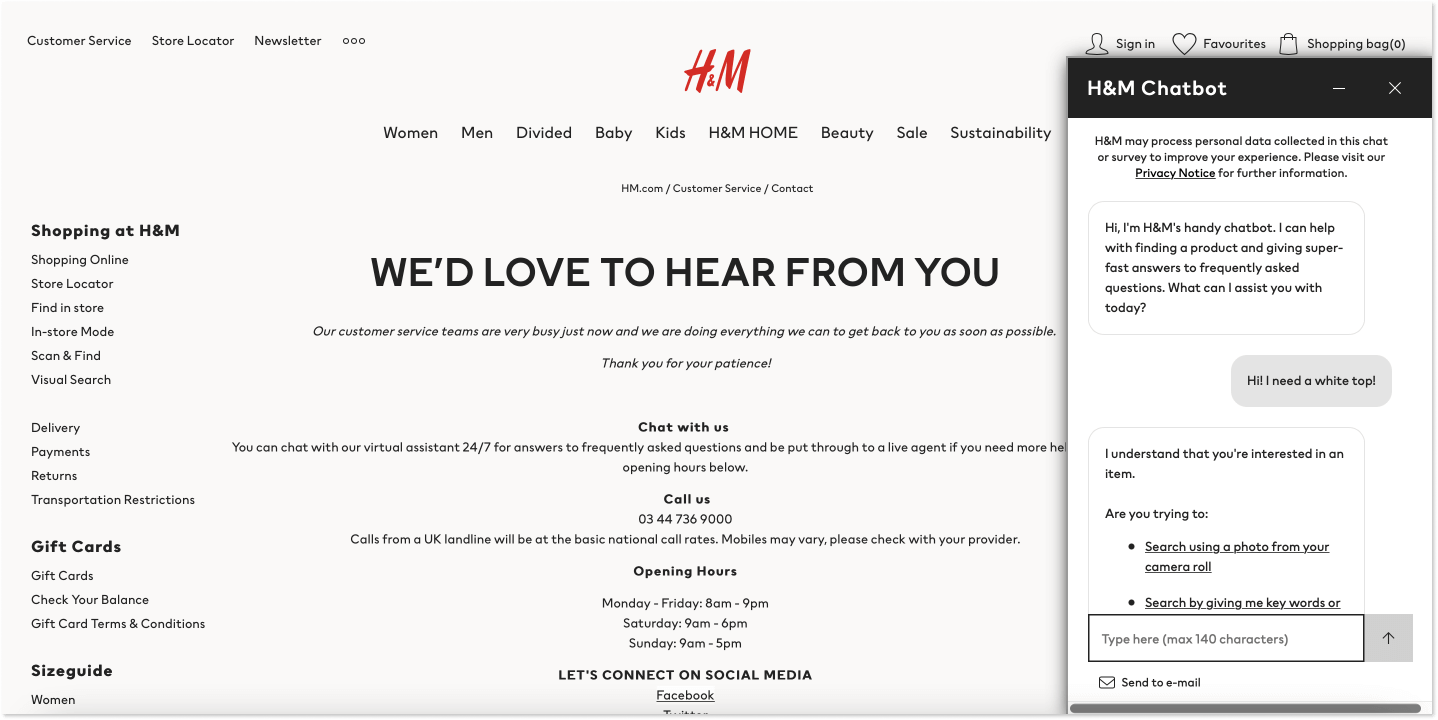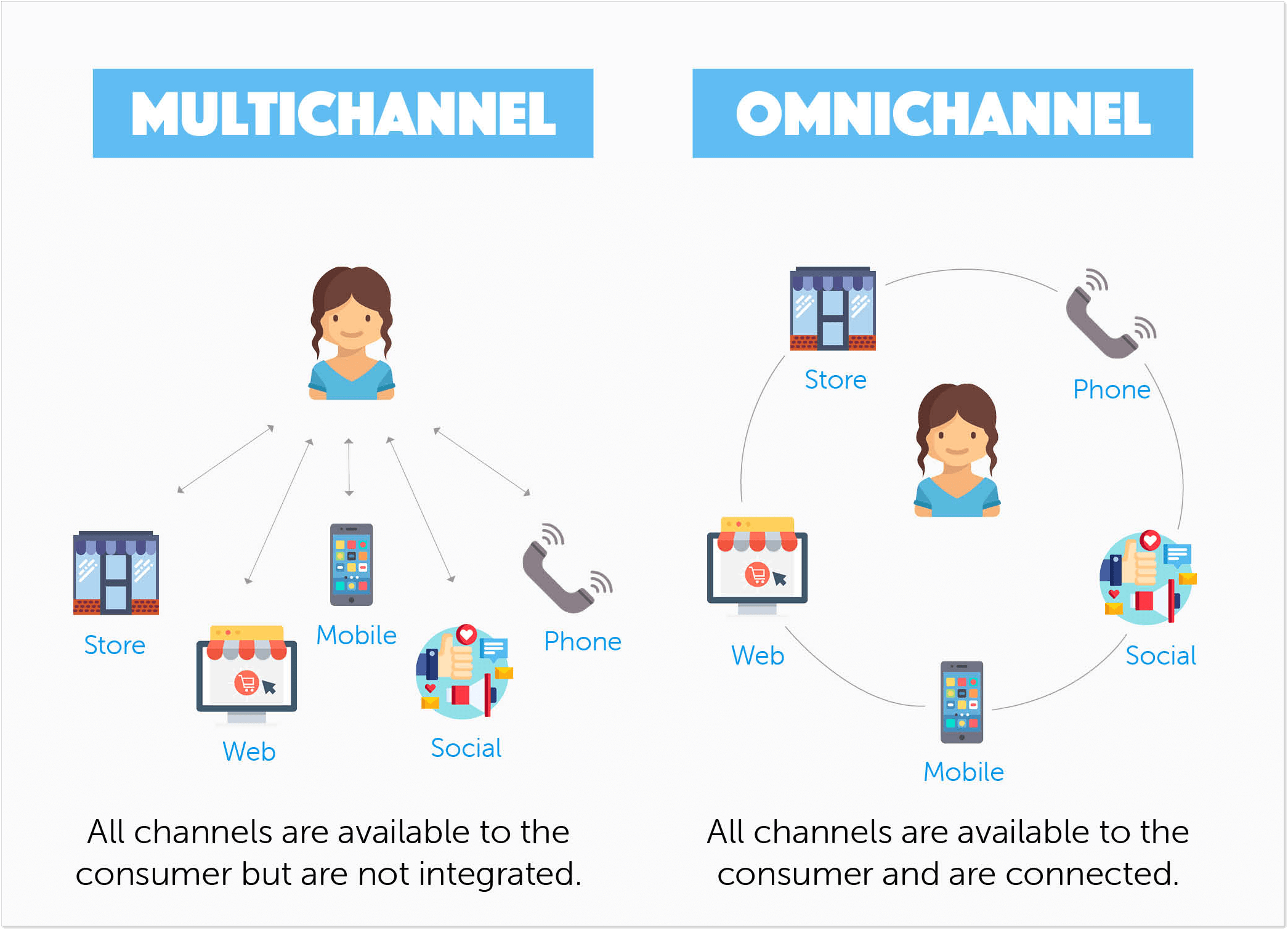Top 8 Support Channels Users Love the Most and Tips for How to Choose the Right Ones
Looking for the best customer service channels? We have just what you need.
Written by Tetiana Shataieva

Everybody knows that today the most popular customer service channels include email and social media. So when a person launches a company, they create at least an email inbox and a social media account or two on different platforms if they are mature enough.
And yet, there are businesses nowadays that completely ignore this world-known fact and offer just one support channel – phone calls. For me, it’s almost a dealbreaker.
When I arrived in Budva, I was looking for a taxi mobile app and found none. No Uber, no Lyft, no Bolt, or any other convenient way to order a car. So when I was suddenly caught at the café without an umbrella and heavy rain pouring outside, I turned to my landlord for help. He shared the phone number of the local taxi service 🚕.
Not only do they offer a phone as a single communication channel, but they don’t speak English. I called the number, and it turned out that there were no free cars. Then I had to google other local taxi providers and after 3-4 unsuccessful calls, I had no choice but to walk in the rain.
For the sake of truth, I must admit that I have used the taxi here a couple of times, but since the only way to order a car is to make a phone call, I usually think twice before doing that. And in most cases, I just take a walk. All in all, it’s good for my health and budget, but bad for the local taxi business.
In this article, I will share the variety of top support channels, and how to choose the right ones for your business. Providing a few communication methods allows customers to easily reach you whenever they need your service.
Top 8 customer service channels that users prefer the most
There are dozens of customer support channels that you can use to provide customer service. Basically, it comprises all ways of communication – online and offline. Here, we focus on the top channels that users love the most.
1. Email
Email takes the first place as the most popular communication channel between customers and brands. It’s enough to say that over 4 billion people around the world use it on a daily basis. On top of that, 47% of consumers rate email as the most preferred way of interaction with a seller.
It’s a free, simple tool accessible from anywhere, and customers love it for its mobile-friendliness. Many choose email as it provides more confidentiality than texting brands on social media. The channel also allows for easy file exchange, which is a great advantage.
As it follows, there is no way you can go without an email account today. It’s simply a must. People expect it and want to receive promotional materials via email. However, keep in mind, that some letters can be lost due to consumers’ inbox overload. Look at your own inbox, I bet there are thousands of emails you will never open.
The email is opening the list of customer support channels, and it is good for:
- Collecting leads email addresses. Once they reach out to you via email, you have their address in your database.
- Offering a universal way of communication that most people know about. Considering how ubiquitous the email channel is, probably it’s the most obvious way for clients to reach out to brands.
- Handling non-urgent requests. When customers send an email, they usually expect to get a reply within 24 hours. For urgent inquiries, there are other communication methods (stay tuned 🤫).
2. Live chat
Let’s cover the basics first. Live chat is one of the top customer service channels, and it is messaging software. You subscribe to it, then copy a code snippet (in most scenarios), add it to your website/mobile application, and a live chat widget will appear on your site. Next, you can manage all chats with clients using a smooth shared inbox.
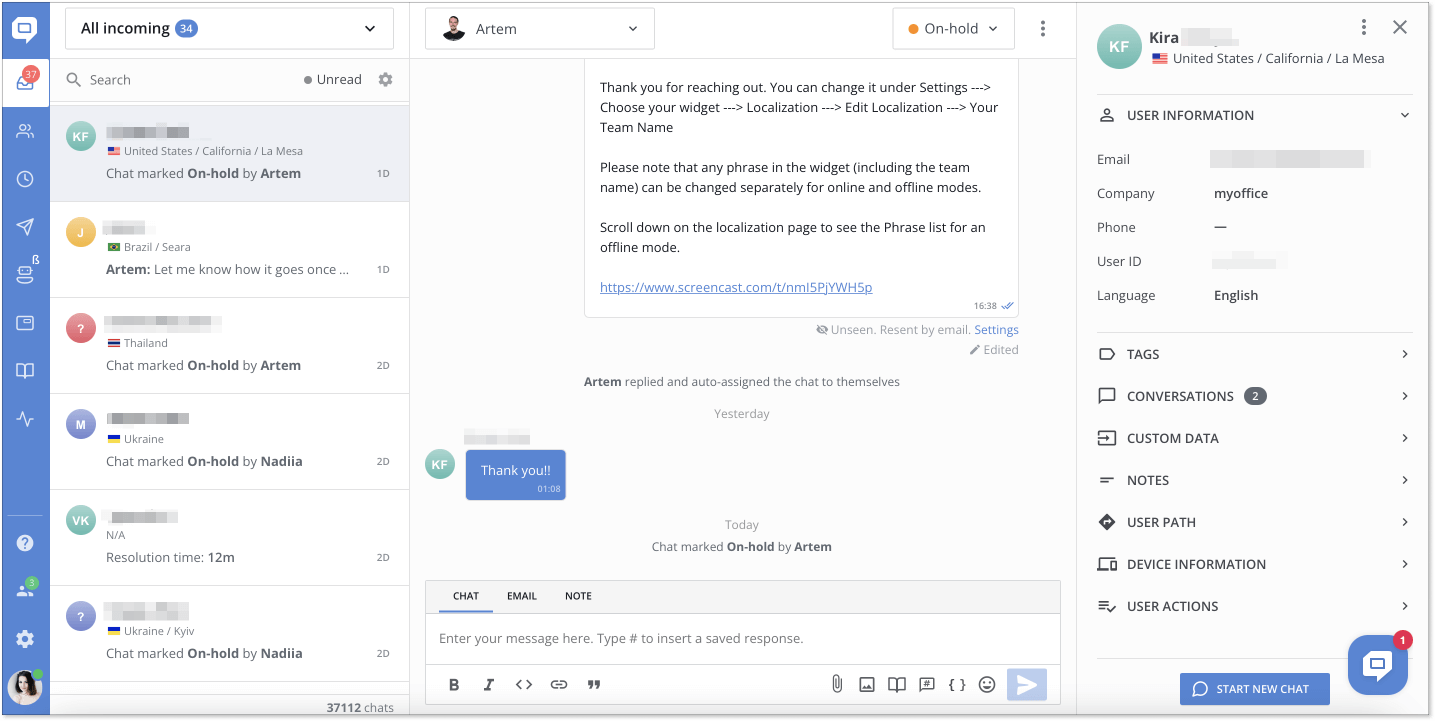
It is truly the easiest and fastest way to communicate with customers. Millennials love it, as 63% of them prefer live chat to any other traditional form of customer service. No doubt users choose it since the average first response time is just 40 sec compared to 24 hours with an email channel.
Basically, live chat represents a very simple and familiar way of chatting for many (similar to messaging apps).

In other words, it’s a way to exchange messages lightning fast. Moreover, good live chat tools allow you to exchange files, links, and documents with users, leave private notes (visible to other fellow agents only), delete/edit messages, and see what customers are typing before they hit ‘Send’.
The live chat customer service channel is good for:
- Communication with customers in real-time. Solve issues fast thanks to quick messages exchange.
- Handling repetitive questions. People often come asking similar questions, you can speed up your support by sharing saved responses in a live chat.
- Improving customer satisfaction rating. About 73% of customers find live chat the most satisfactory way of communicating with a brand.
- Customer onboarding. Set up a flow of automated messages on your platform and help customers in their next step.
3. Chatbot
Chatbots can’t be found among your usual support channels since they can be leveraged across multiple avenues themselves like live chat, social media, email, etc. But first things first, a chatbot is software that conducts human-like interactions with users through text or voice. Their goal is to automate conversations and improve customer service.
Do customers like chatbots? The numbers say that 60% of consumers would prefer to wait for an agent than use a chatbot. At the same time, 68% of users like bots for immediate replies. Moreover, the satisfaction rate of bot-only chats reaches 87.58%, which is a great result. So, what’s the trick here?
It all boils down to chatbot pricing, your niche and how well you set up your bot within your business’s ecosystem. If you expect your chatbot to handle all chats, so that you can cut most expenses on the customer support team, then you might be disappointed. Bots are not that developed yet. But if you want a chatbot to assist you in dealing with repetitive questions and fasten customer support, then the tool can be a great advantage. Just look up for scenario examples for customer service and find the right tool.
The chatbot support channel is good for:
- Providing 24/7 customer support. Another benefit of chatbots is the fact they operate without coffee breaks and resting time, instead, they are always there to assist users.
- Improving the average response time. Create a scenario for your chatbot, set up the reply time (usually, it’s up to 10 seconds), and launch it. Users will love quick answers.
- Reducing customer service costs. Even though you can’t cut the costs with a chatbot completely, it can still save you some money. Statistics say that using chatbots can take the edge of customer service costs by as much as 30%.
- Dealing with frequently asked questions. You can create a bot flow that accumulates all repetitive questions and answers to them. So next time a user reaches out with a how-to-change-the-password question, the bot will share a reply for you.
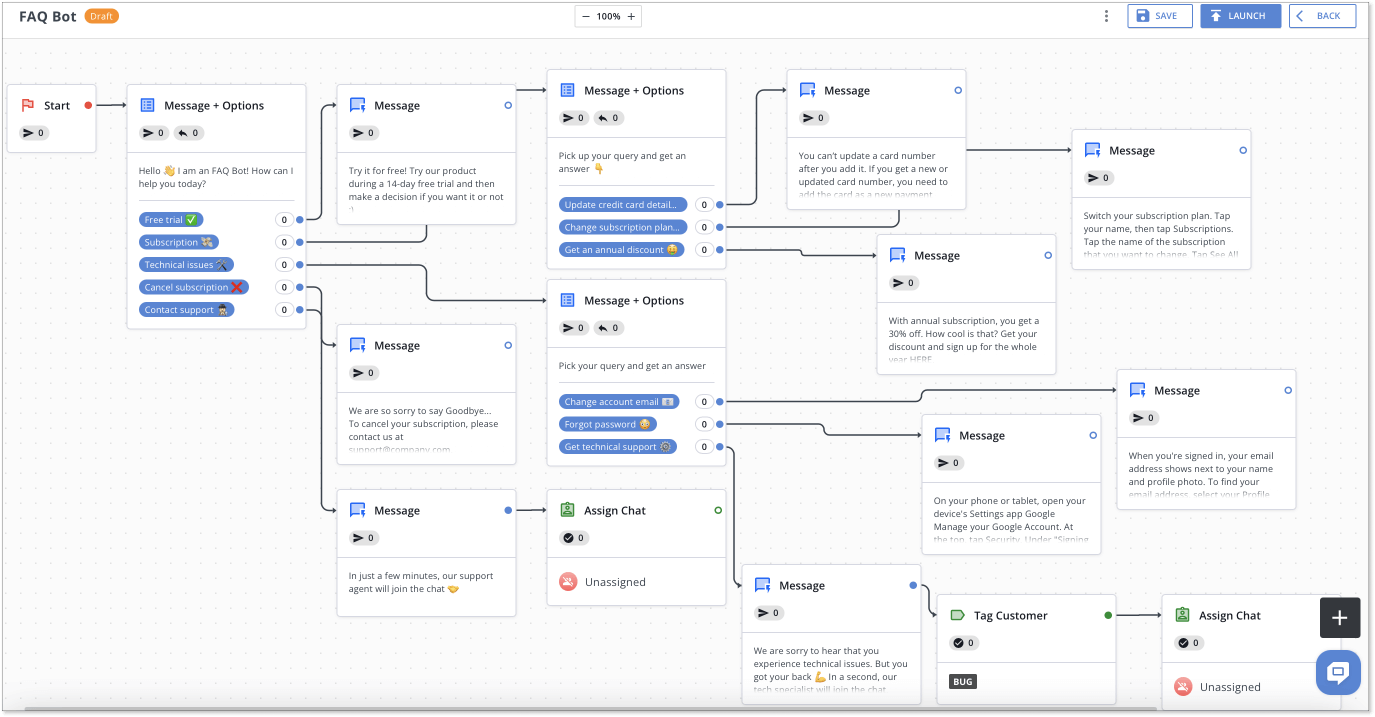
4. Knowledge base
It’s one of the most popular customer service channels for introverted users, as it doesn’t involve any real-time conversation. In fact, a knowledge base is a self-service online library that contains structured information about your product, service, and how it functions. So basically, a user just goes to your knowledge base and independently finds the required information.
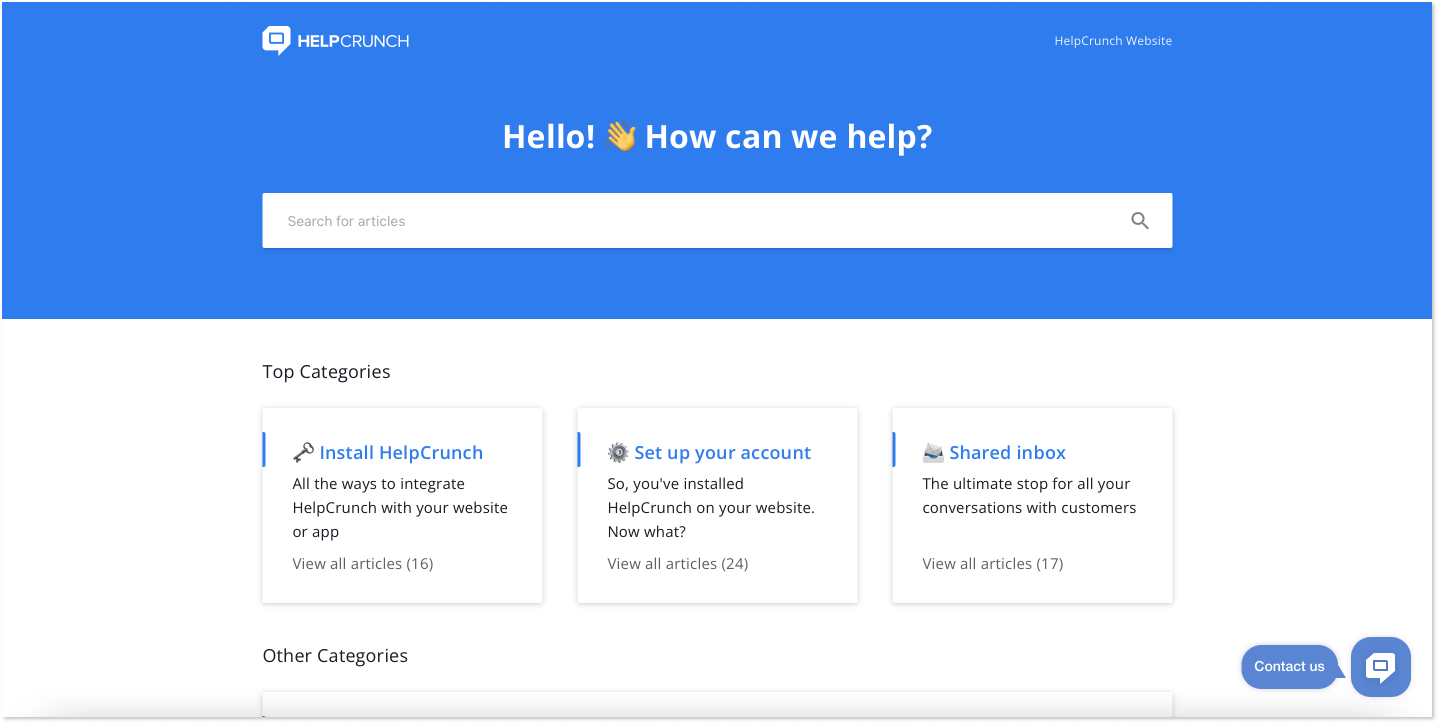
You might assume that people are too lazy for such a service and prefer someone to give them ready-made solutions on a plate. It’s true for some users, but not all of them. In fact, as many as 81% of respondents usually make an attempt to solve an issue themselves first before reaching out to customer support. So imagine, how much it can decrease the number of inquiries if you offer a comprehensive knowledge base to your clients.
Some customer communication software allows you to integrate the knowledge base into the live chat widget, which severely improves its accessibility. In this case, users have a choice whether to ask an agent or search for the solution themselves. Killing two birds with one stone never hurt anybody (except for birds, obviously 🦜).

The knowledge base support channel is good for:
- Explanation of complex processes and repetitive actions. The knowledge base usually includes helpful articles that precisely show how to complete a certain action step by step. You can share links to these materials in live chat communication as well.
- Providing 24/7 support. Just like a chatbot, a knowledge base is available to users around the clock, which means clients can try to solve their issues anytime, anywhere on their own.
- Spotting the plots, where users usually struggle. When monitoring the knowledge base reports, you can notice that some articles are much more popular than others. This may signal that certain parts of the user journey could be improved.
5. Social media
The question is the following: if you are already using social media for brand awareness, why not make them support channels as well? I remember texting a recreation center on Instagram once and asking if they had free rooms for the weekend. The manager replied: “I’m sorry, we are not providing this information on social media. Call this number ***”.
That is weird and not customer-centric at all. I thought, why do they have an Instagram page if they can’t provide any information there? So I definitely recommend you to cater to the client’s expectations wherever you are – social media, brick-and-mortar store, phone, email, or live chat.
And it’s not just my opinion, as 54% of people globally have a more favorable view of brands that respond to them on social media. It shouldn’t come as a surprise, and yet many companies ignore users’ messages or make customers wait for a reply for days.
The social media support channel is good for:
- Being closer to your target audience. 42% of social media users leverage it to research the product. While researching, a question may pop up, and naturally, they will text to direct messages on Facebook, Instagram, or elsewhere.
- Providing personalized responses. When talking on social media, you immediately get access to more private information about the user, which allows for personalized service.
6. Phone
Who in the world still calls support centers nowadays? Actually, quite many, I must admit. Around 40% of people in the U.S. rely on the phone when they are looking for support with a product or service. Usually, it involves urgent, complex questions that have to be answered immediately.
When I was withdrawing cash at the ATM, a mobile notification popped up saying that my money has been transferred from my account, but the machine said: “Sorry, the operation wasn’t successful”. And I was left there on the street with no money neither in my account nor in my pocket. That was a pretty pressing case for me, so I called the contact center right away.
Call centers as support channels are good for:
Fast issue resolution. In the perfect case scenario, a client calls a contact center and gets a quick solution to their problem. Unfortunately, in most cases, people have to hold until a free operator takes over the call, talks for a moment, then transfers you to another support agent, and only then you get your answer. That’s how it works with call centers, and yet it’s a pretty fast way to get assistance.
7. Video chat
Getting with a customer on the phone helps to resolve issues fast, but getting on a live video chat can have even better results. It allows you to demonstrate your screen and show how to deal with the problem that the user is facing.
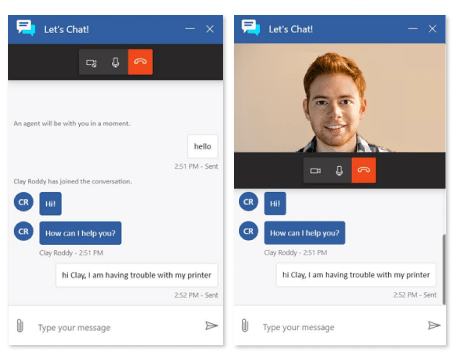
I experienced video chat support twice: one time with a doctor who helped to diagnose my health condition; the second time, with a bank representative who asked me to video chat to confirm my identity. That was a satisfying experience, even though it requires you to find good lighting, get up from your bed, and out of your PJs.
Not every company offers this customer service channel, as it’s not that popular among users, and fits rather some specific niches.
The video chat customer support is good for:
- Educational, medical, banking, law, etc. sectors. Sometimes, when a customer wants to consult a specialist on something, it is much better to video call and talk face to face than exchange emails or chat for hours.
- Demonstrating your software. Say, you want to introduce your program closer to users and persuade them to buy it. Video calling might be the only and the best way to do so.
- Handling requests from non-tech-savvy users or dealing with way too complex issues. There are cases when screen demonstration or face-to-face communication is required for a better result, then video chat takes the stage.
8. Community forums
A forum is a virtual community where people who use your product or service can exchange ideas, and tips, ask questions, and share replies. All that can happen with a slight moderation from your side. Even though it’s not a widely popular support channel, 83% of respondents say they would use online community forums for self-service if it was available.
Within forums, you can create different discussion topics, categorize them, and reply to some especially tricky questions that users fail to answer. Actually, one company using community forums particularly well to support customers and grow brand awareness is Apple.
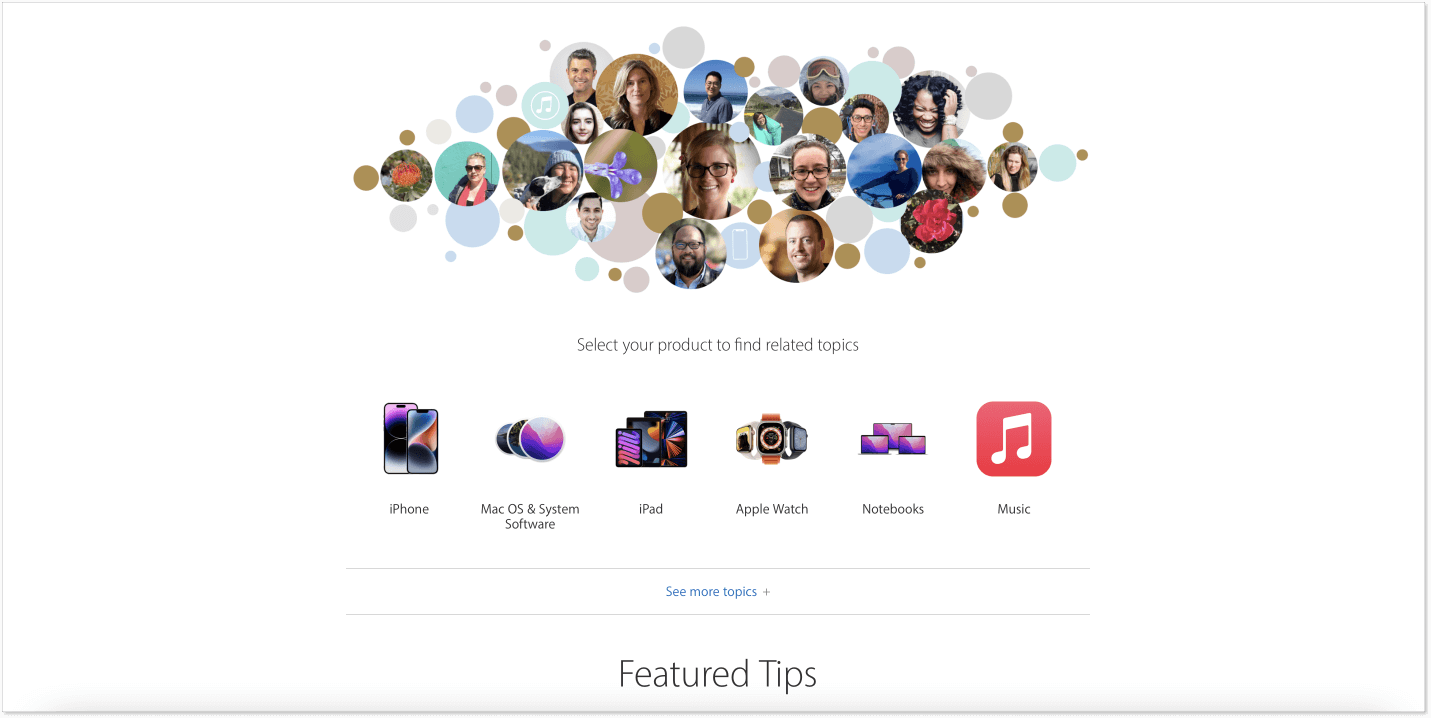
The company made the whole process extremely simple and straightforward for Apple fans. They achieved that thanks to clearly identified key categories with product icons. Navigating the forum is a breeze for users, which makes the entire experience of sharing questions and finding answers pain-free.
Community forums are among the most engaging customer service channels, and they are good for:
- Dealing with repetitive questions. Users can easily find answers to popular inquiries that all newbies face in the beginning.
- Keeping the information up to date. Even if you didn’t have time to update your knowledge base or the website information, it’s ok, as people on forums share actual information in real-time.
- Collecting feedback. Oh yeah, this is the best way to see what people really think of your product or service. Try facing all your happy and disappointed users if you dare.
How to choose the best support channels for your business?
Reading through the list of the top support channels above can make your brain hurt. What is the best channel for your brand? Should you try to adopt all of these solutions at once? Would it be a great idea to be wherever your customers are?
But there’s no point in splitting hairs over this, as the answer is very simple.
First, there is no need to add every single communication channel to your business ecosystem. It will be enough to focus on just 1-4 avenues and be excellent there. Even if you concentrate on just one for a while, it’s enough to dress for success.
Second, to identify what support channels exactly you should begin with, follow a few easy steps we describe below:
Step 1. Grasp your customers
Sure, “know your customers” is a rule of thumb, and hearing this over and over can make some entrepreneurs sick. But nothing can be done, this is a really important step from which any business planning begins.
So in our case, before you understand what channels you should go with, try to understand the behavior and preferences of your target audience well. Start with asking yourself and them the questions like:
- How old is your customer base?
- What types of questions do they usually have (complex technical questions or general ones)?
- What communication channels do they use on a daily basis?
- Which support avenues are your direct competitors using?
Send a quick survey to get the answers. I know a couple of great brands that began with a simple questionnaire posted on Facebook. So just do that 💪
Step 2. Take your opportunities into consideration
Once you have all the answers in your hands, think of if and how you could meet your customers’ expectations. You might discover that your buyer persona uses email and phone support. While handling emails is not a huge challenge, with phone support you can bump into a couple of roadblocks along the way.
For instance, when you are short on budget and can’t afford a big customer support team, handling calls becomes a demur. Then try to focus on emails and live chat support for real-time communication, for starters. Later on, you can add more channels as your business grows bigger.
In short, it’s important to match your users’ preferences with your current possibilities. And it’s definitely better to provide fewer communication channels but with excellency than many but of poor quality.
Step 3. Monitor the modern trends
When you have your perfect support channels up and running, it’s crucial to keep an eye on the market, so new trends don’t catch you unaware.
As the customer service landscape is shifting fast, younger users tend to switch to innovative channels like self-service tools. If you adopt new solutions quickly, you can get a great advantage and stand out from the crowd!
Like, for example, these trends show that:
- 69% of customers prefer to solve their issues independently, which results in 62% of companies investing more in self-service solutions (knowledge base, FAQ, etc.)
- 71% of respondents expect businesses to offer customer support over messaging channels
- Most users prefer automation (read chatbots) for simple tasks only, like tracking an order (41%), checking status or balance (32%), or changing an order (22%).
Go omnichannel: connect the right customer support channels under one roof
Finally, you know exactly what customer service channels to provide to your clients. That makes you a multichannel customer service brand, meaning your communication with users is happening across several avenues. It can include email, live chat, social media, phone, and whatnot (sometimes simultaneously!).
According to the latest trends in services, 43% of business leaders report a rise in customer demands for omnichannel experiences. Omnichannel support is not just a trend; it’s a must-have component of your marketing strategy.
So how can you keep up to date with all the information users are sharing with you across different customer service channels? You certainly don’t want to ask a client all the basic questions (name, email, purchase history, issues experienced) every time they text or call you.
That’s where omnichannel customer service comes in. What’s the major difference between multichannel and omnichannel support? The former refers to a few separated service avenues not connected to one another, while the latter implies that all your customer service channels are integrated and connected with each other.
For instance, a users write throug the live chat to customer service in schools, then they leave websites and go to social media to ask for an update on their issue on Messenger. Thanks to omnichannel customer service software, you get all these messages into a single inbox, from where your team can easily manage chats.
A support agent can immediately recognize the user thanks to the information stored in a database of the customer communication platform. So, you can effortlessly update clients on their queries regarding the channel they use to get in touch with you.
Here are more tips on how to provide great customer service.
The bottom line
It’s time to wrap up everything we discussed today. While there are lots of service channels, you don’t need them all, instead, start with a few methods that are well-known to your audience. Also, remember that it’s better to focus on just 2-3 avenues and bring them to perfection, than jumping into a have-it-all strategy and neglecting the quality.
Once you know what channels are the best for your audience, make sure you synchronize within seamless communication software. We recommend going with the HelpCrunch platform, which offers a unified inbox for all customer service channels, live chat, knowledge base, chatbot, and many other features that can come in handy. Let’s get to it!

